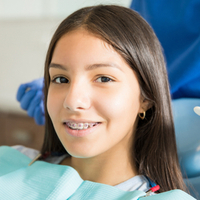New study suggests that braces don’t always lead to better self-esteem

A new study carried out by researchers in Australia has suggested that braces don’t always contribute to higher levels of confidence and self-esteem.
Researchers at the University of Adelaide discovered that people who had undergone orthodontic treatment didn’t necessarily have higher levels of confidence than those who had chosen not to have braces.
The team analysed data from 448 13-year olds from South Australia, which dated back to 1988/1989. By the time the group had reached the age of 30 years old in 2005/2006, more than a third had worn braces.
The team, which was led by Dr Esma Dogramaci and Professor David Brennan, found that there was a pattern, which linked higher psychosocial scores with people who had not had braces. The first study of its kind in Australia, the aim of the project was to evaluate the connection between braces and an increased level of happiness and confidence later in life.
Speaking about the findings, Dr Dogramaci explained that the team discovered that people who didn’t have braces were actually more likely to be happier and more optimistic than those who had undergone treatment.
To reach a conclusion, researchers analysed four primary psychosocial elements, which included how well participants felt they dealt with new or challenging situations, how well they felt they were able to take care of their own health and wellbeing, the level of support the individual had from their network of friends and family and their personal level of optimism.
Alex Furlan, a fourth year dental student, said that he opted not to have braces, despite the fact that his dentist recommended treatment when he was younger. He chose not to go ahead because he never “felt the need” to straighten his teeth and is perfectly happy with his smile how it is. There’s a lot of evidence to suggest that people assume that braces will make them happy, but this study argues that this is not the case.
The findings of the study have been published in the Orthodontics and Craniofacial research journal.
Join this Discussion









